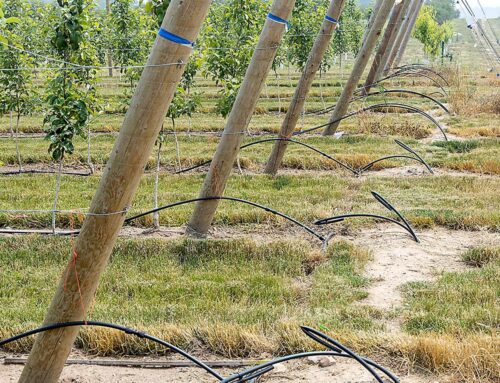
Source: U.S. Department of Agriculture Economic Research Service (Jared Johnson/Good Fruit Grower illustration)

Dr. Desmond O’Rourke
Faced with increasing volumes of apples to sell, Washington marketers have two options: either lower prices or increase their promotional efforts, says Dr. Desmond O’Rourke, an agricultural economist based in Pullman, Washington.
His choice? “You have to promote.”
Since 2003, the Washington Apple Commission’s promotional efforts have been limited to export markets, where the Washington apple industry traditionally sells a third of its crop. But it no longer has an industry-wide promotion effort in the domestic market.
“It boggles the mind that a major industry like apples would not have a promotional program,” O’Rourke said. “It’s not just to expand the market—I think they’re too late for that. They also face a contraction of the market.”
Per-capita consumption of apples and apple products has been going down fairly steadily over the past 20 years, he said, and the array of fruits and snacks that consumers have to choose from continues to increase.
What’s saved the industry so far has been a healthy export market, an increase in the U.S. population, and the ability to capture market share from other U.S. apple growing regions.
Since the Apple Commission ended its domestic program, individual marketing companies have been doing their own promotion and merchandising. “They’re spending money to get greater access to retailers for their company,” O’Rourke said. “But there’s nobody really trying to expand the market for apples in general.”
O’Rourke believes that, with a budget of $40 million, the industry could start to get some brand recognition with consumers. However, individual shippers, who are focused on gaining access to retail space, would be unlikely to want to put promotional dollars into a general promotion instead of spending it themselves.
Say a shipper with 10 million boxes of apples allocates 50 cents a box. That’s $5 million that their merchandising department has under their control.
“I think those guys are going to be resistant to going back to any sort of a generic program,” he said.
O’Rourke, who worked in advertising before becoming an agricultural economist, said he has a bias towards promotions.
“My argument all along, based on my career in advertising, is that every time you plant a tree you need to put money aside for marketing. When you go from 115 million boxes to 150 million, without putting money aside for marketing and promotion, you’re just asking for trouble. You could not imagine Mars or Nestlé planning to add 20 to 30 percent production and not have a marketing budget for it.”
O’Rourke said it’s fortunate that Washington growers left the Apple Commission’s export promotion program in place, though the funding level is hardly adequate.
For the coming season, the commission will have a little more than $8 million to spend to promote apples around the whole world. Of that total, $3 million will come from grower assessments and the rest from the federal Market Access Promotion program. •






Is it possible people are not buying as many apples because they’re sprayed with so many pesticides? I think it is a little short-sighted not to acknowledge smarter consumers are demanding foods without this intrusion on their health. Have surveys been done to ascertain why consumption has gone down? Why are we assuming it’s a lack of marketing affecting sales?